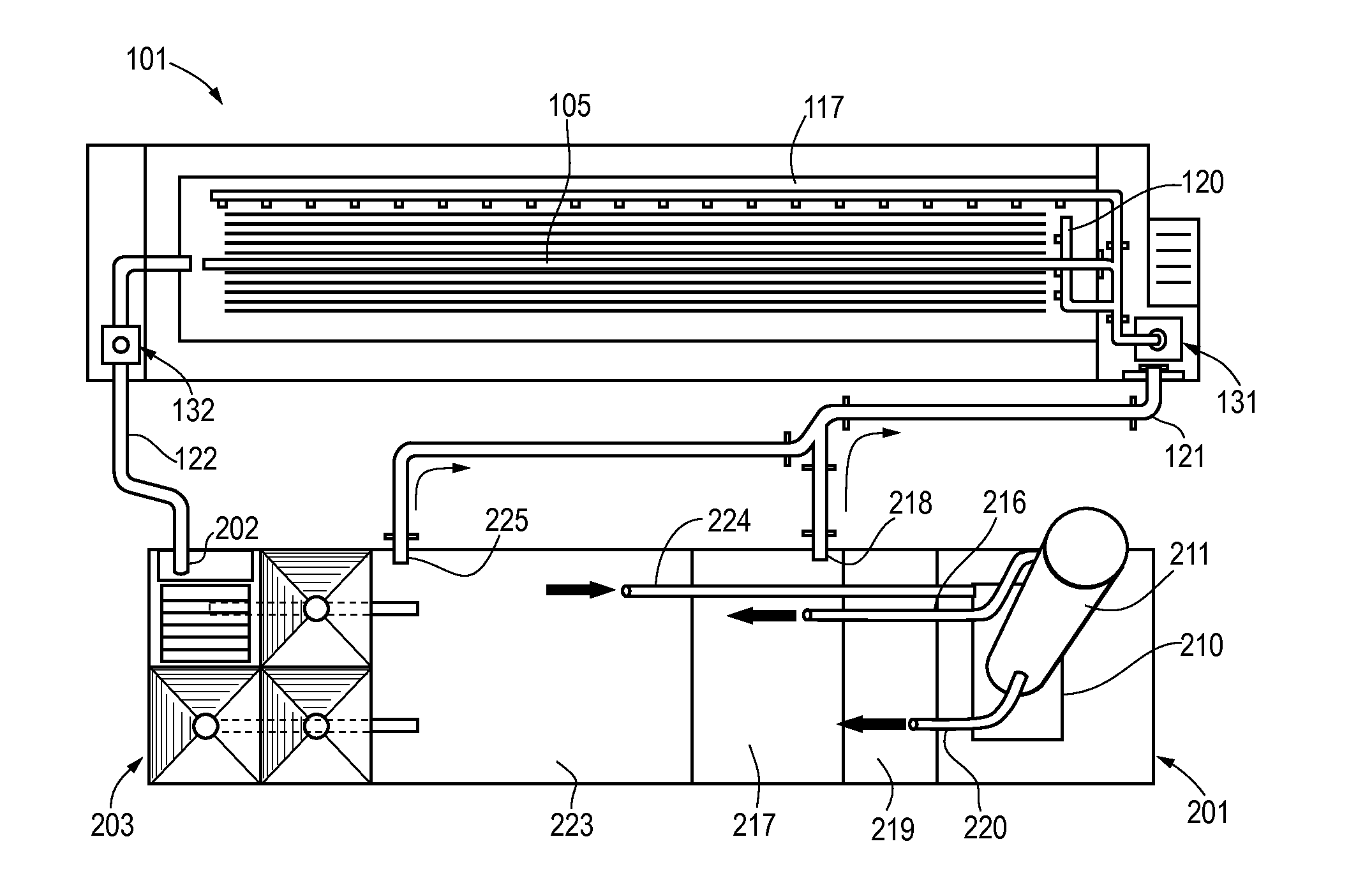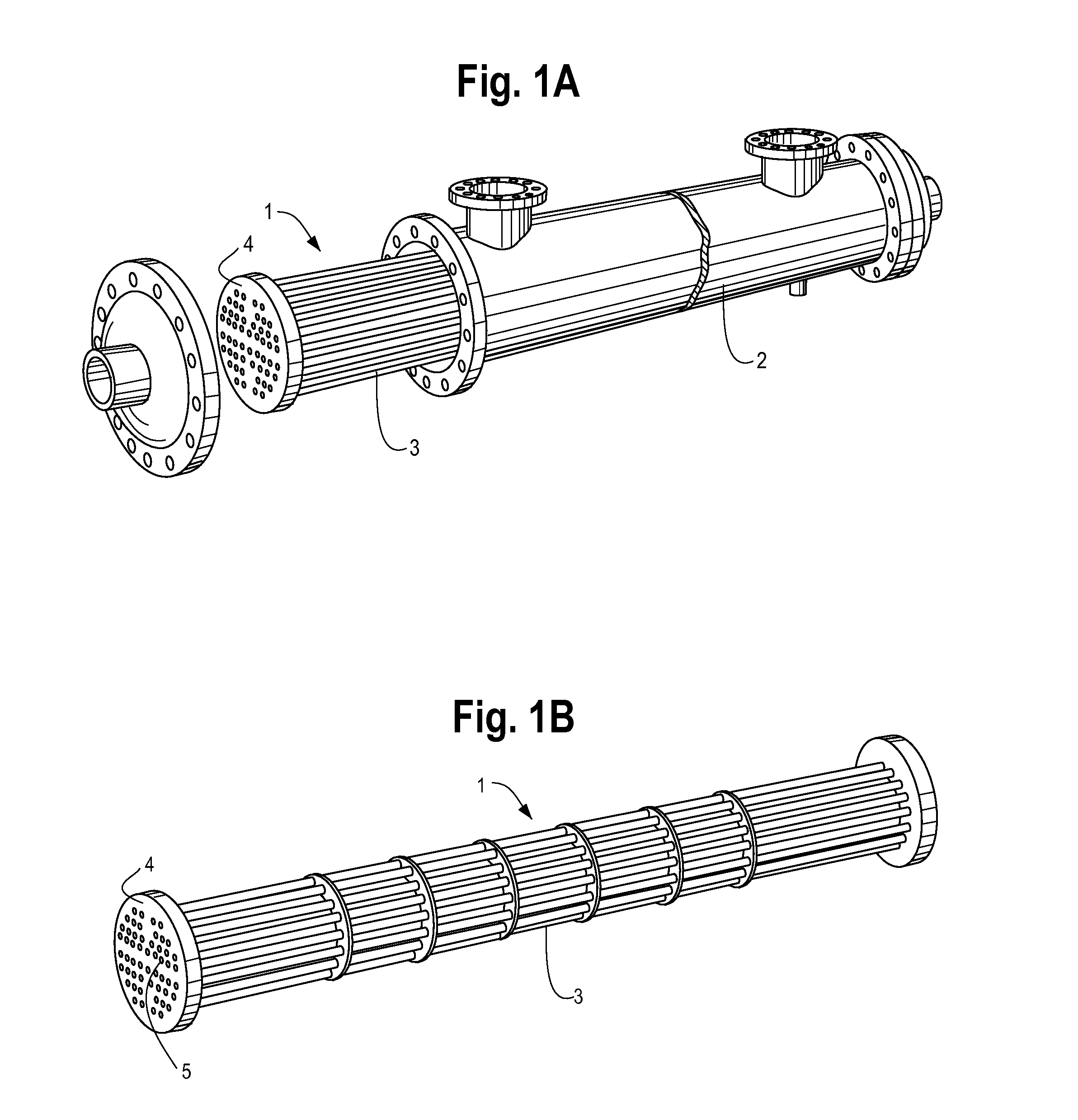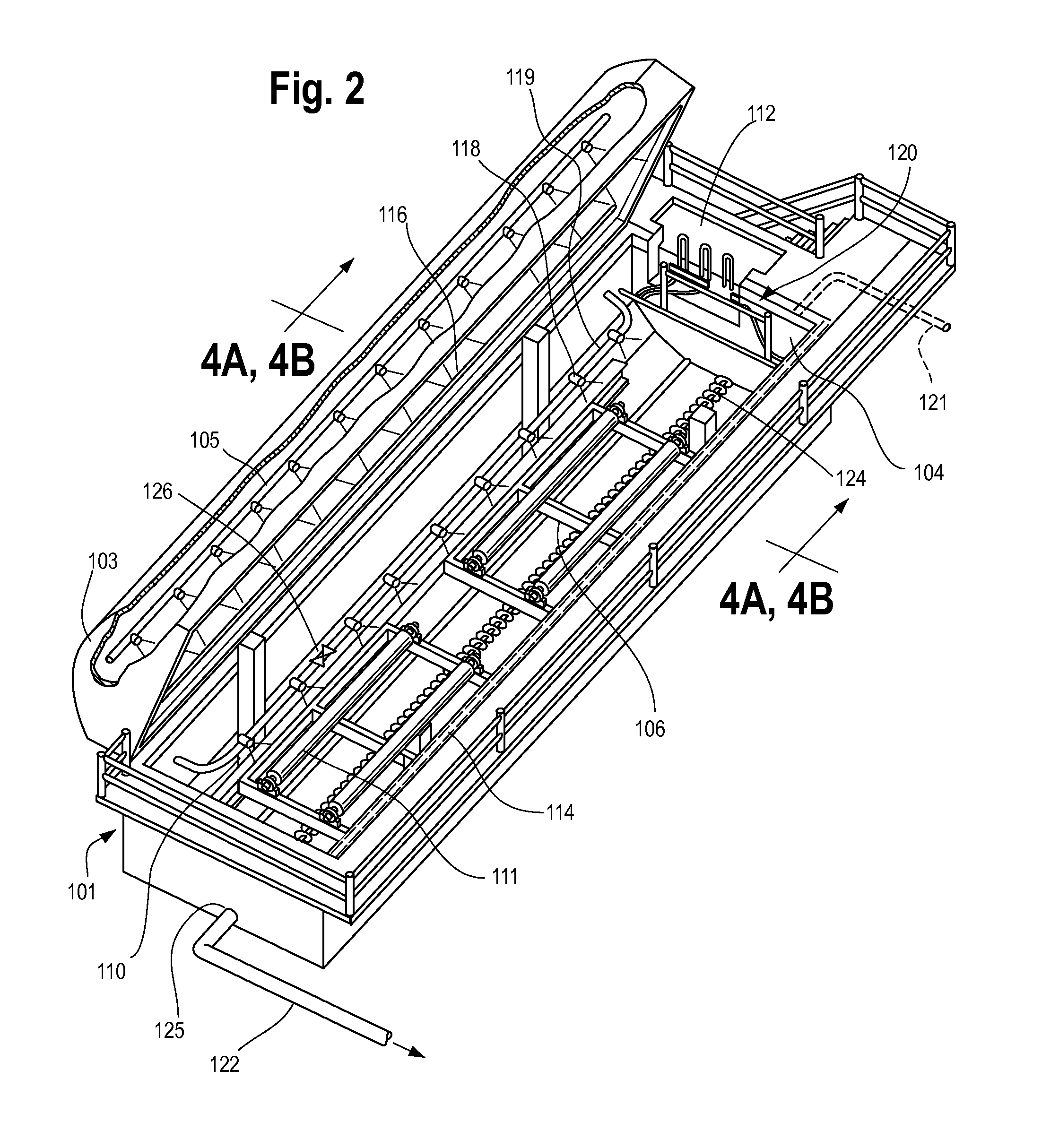Method and system for removing hydrocarbon deposits from heat exchanger tube bundles
a technology of hydrocarbon deposits and heat exchanger tubes, which is applied in the direction of cleaning heat exchange devices, flush cleaning, cleaning using liquids, etc., can solve the problems of reducing the effectiveness of the heat exchanger, requiring the operator to consume more energy to achieve the desired degree of temperature change, and requiring a shut-down of the plant's operation, so as to reduce the cleaning time of the bundles and reduce the amount of time , the effect of saving energy
- Summary
- Abstract
- Description
- Claims
- Application Information
AI Technical Summary
Benefits of technology
Problems solved by technology
Method used
Image
Examples
Embodiment Construction
[0034]A heat exchanger tube bundle of the type that may be treated by the present invention is illustrated in FIG. 1. A heat exchanger tube bundle 1 is made up of a large number of individual tubes packed together to form a cylindrical structure. When in use, the heat exchanger tube bundle is surrounded by a shell 2. Accordingly, a heat exchanger tube bundle 1 comprises an exterior, or shell-side, surface 3 and a tube sheet surface 4. Heat exchanger bundles are often very large, typically ranging up to 84 inches in diameter and 30 feet in length. When used in certain industries, such as the gas and oil industry, heat exchanger tube bundles 1 become contaminated with hydrocarbon deposits, such as heavy oils, diluents, paraffins and / or bitumen.
Heat Exchanger Tube Bundle Cleaning System
[0035]According to an aspect of the present invention, a system is provided for the removal of hydrocarbon deposits from a heat exchanger tube bundle by immersion in an organic solvent. A preferred embod...
PUM
| Property | Measurement | Unit |
|---|---|---|
| Fraction | aaaaa | aaaaa |
| Time | aaaaa | aaaaa |
| Fraction | aaaaa | aaaaa |
Abstract
Description
Claims
Application Information
 Login to View More
Login to View More - R&D
- Intellectual Property
- Life Sciences
- Materials
- Tech Scout
- Unparalleled Data Quality
- Higher Quality Content
- 60% Fewer Hallucinations
Browse by: Latest US Patents, China's latest patents, Technical Efficacy Thesaurus, Application Domain, Technology Topic, Popular Technical Reports.
© 2025 PatSnap. All rights reserved.Legal|Privacy policy|Modern Slavery Act Transparency Statement|Sitemap|About US| Contact US: help@patsnap.com



